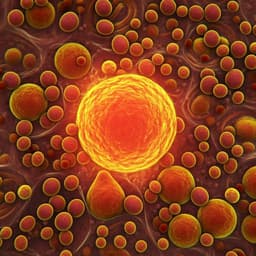
Chemistry
Generation of long-chain fatty acids by hydrogen-driven bicarbonate reduction in ancient alkaline hydrothermal vents
G. Purvis, L. Šiller, et al.
This groundbreaking study reveals how dissolved hydrogen and bicarbonate react with magnetite to produce vital long-chain aliphatic compounds, essential for the formation of early cell membranes. Conducted by Graham Purvis and colleagues at Newcastle University, this research opens up new insights into the origins of life and the potential pathways for the emergence of membrane-forming amphiphilic organic molecules.
~3 min • Beginner • English
Related Publications
Explore these studies to deepen your understanding of the subject.







